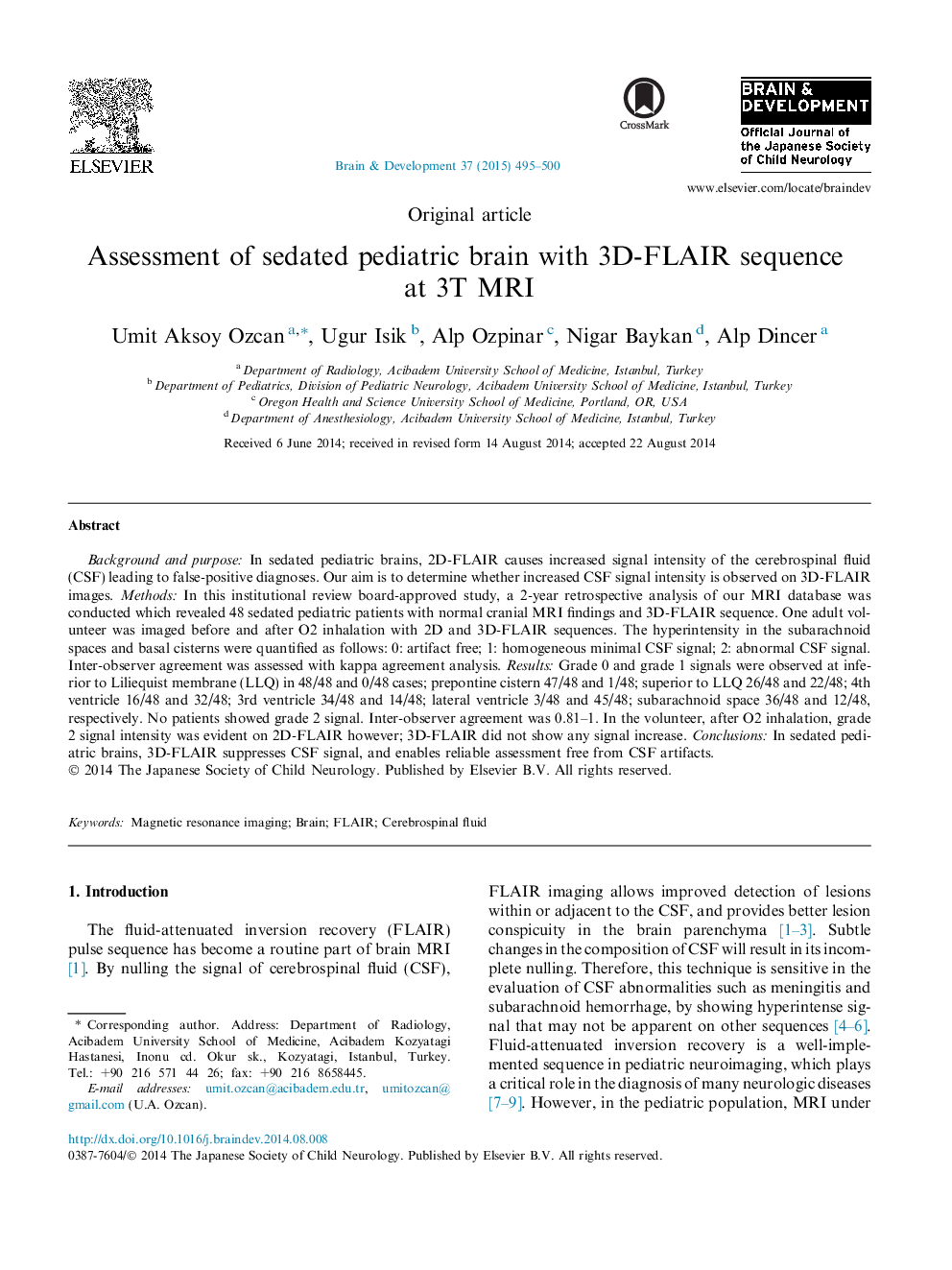| Article ID | Journal | Published Year | Pages | File Type |
|---|---|---|---|---|
| 3036660 | Brain and Development | 2015 | 6 Pages |
Background and purpose: In sedated pediatric brains, 2D-FLAIR causes increased signal intensity of the cerebrospinal fluid (CSF) leading to false-positive diagnoses. Our aim is to determine whether increased CSF signal intensity is observed on 3D-FLAIR images. Methods: In this institutional review board-approved study, a 2-year retrospective analysis of our MRI database was conducted which revealed 48 sedated pediatric patients with normal cranial MRI findings and 3D-FLAIR sequence. One adult volunteer was imaged before and after O2 inhalation with 2D and 3D-FLAIR sequences. The hyperintensity in the subarachnoid spaces and basal cisterns were quantified as follows: 0: artifact free; 1: homogeneous minimal CSF signal; 2: abnormal CSF signal. Inter-observer agreement was assessed with kappa agreement analysis. Results: Grade 0 and grade 1 signals were observed at inferior to Liliequist membrane (LLQ) in 48/48 and 0/48 cases; prepontine cistern 47/48 and 1/48; superior to LLQ 26/48 and 22/48; 4th ventricle 16/48 and 32/48; 3rd ventricle 34/48 and 14/48; lateral ventricle 3/48 and 45/48; subarachnoid space 36/48 and 12/48, respectively. No patients showed grade 2 signal. Inter-observer agreement was 0.81–1. In the volunteer, after O2 inhalation, grade 2 signal intensity was evident on 2D-FLAIR however; 3D-FLAIR did not show any signal increase. Conclusions: In sedated pediatric brains, 3D-FLAIR suppresses CSF signal, and enables reliable assessment free from CSF artifacts.
